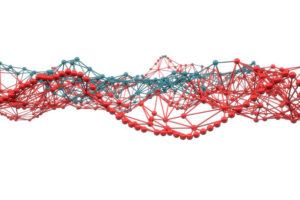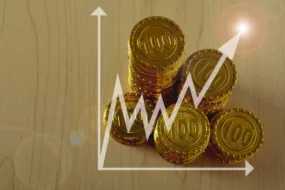Distributed ledgers:

Imagine a world where trust and transparency power environmental progress. That’s the promise of distributed ledger technology (DLT), or blockchain. This innovative system makes waves across industries, and the environment is no exception. But is DLT a climate warrior or a hidden villain? Buckle up, because we’re untangling the impact of DLT on our planet.
Unveiling the Technology Behind Distributed Ledgers (DLTs)
At its core, DLT is a digital record-keeping system on steroids. Unlike traditional databases, DLT doesn’t have a single owner. Instead, imagine a network of computers, each holding a copy of the information. Every update gets verified and added to everyone’s copy, creating an unalterable and transparent record.
Distributed ledger technology (DLT), often associated with blockchain, is rapidly transforming industries. But how does this innovation impact the environment? DLT is a double-edged sword, with both potential benefits and drawbacks for our planet. What does this mean for the environment?
Exploring the Dark Side of Distributed Ledger Technology’s Energy Consumption
One of DLT’s biggest environmental concerns is its energy consumption. Certain verification methods, like proof-of-work, require vast amounts of computing power, translating to high energy demands. Research suggests Bitcoin mining alone consumes more electricity than in some countries! This raises concerns, especially if the energy source is fossil fuels, which contribute to greenhouse gas emissions.
Read More: Unveiling Blockchain’s Role in the Real Estate Industry
Green Potential: How Distributed Ledgers Technology (DLT) Can Champion Sustainability

DLT boasts several features that could be game-changers for environmental initiatives. Here’s a closer look:
i. Transparency Triumphs: DLT shines a light on processes. Imagine tracking the journey of recycled materials from collection to production. With DLT, every step is verifiable, exposing greenwashing and ensuring genuine sustainability efforts.
ii. DLT can streamline operations, empowering efficiency. Think of complex supply chains riddled with inefficiencies. DLT can optimise transportation and resource allocation, reducing environmental impact.
iii. Traceability takes charge: DLT excels at tracking things. From monitoring illegal deforestation to ensuring ethical sourcing of minerals, DLT can empower informed decision-making and promote responsible practices.
iv. Combating Climate Change: DLT can play a crucial role in the fight against climate change. Here’s how:
a. Carbon Tracking: DLT can create a secure and transparent system for tracking carbon emissions throughout a product’s lifecycle. This empowers businesses to identify areas for reduction and helps hold polluters accountable.
b. DLT can revolutionise green finance by facilitating carbon credit creation and trading. These credits incentivize businesses to reduce emissions and invest in sustainable practices.
Let’s get real with some numbers. A study by Earth.org highlights how DLT can optimise supply chains, potentially leading to a 10% reduction in global CO2 emissions—that’s significant!
Challenges to Consider: Distributed Ledger Technology’s Environmental Hiccups

DLT isn’t without its environmental drawbacks. Here’s where things get tricky:
i. The Energy Guzzler: Some DLT systems, like those based on proof-of-work (PoW) consensus mechanisms, require immense computing power. This translates to high energy consumption, potentially negating the environmental benefits.
Did you know? According to a 2019 report by the BBC, a new online tool by the University of Cambridge estimates that Bitcoin is using around seven gigawatts of electricity, equal to 0.21% of the world’s supply!
ii. E-waste woes: The ever-growing network of computers needed for DLT operations raises concerns about electronic waste (e-waste) disposal. Responsible management of e-waste is crucial to ensuring DLT’s long-term sustainability.
Read More: IPOs vs. ICOs: How Blockchain is Changing Fundraising
Finding the Right Balance: Addressing DLT’s Environmental Challenges
To unlock DLT’s full potential for environmental good, we need to address its energy consumption challenges. Here are some promising solutions:
i. Shifting to Sustainable Protocols: The development of eco-friendly consensus mechanisms, such as proof-of-stake (PoS), is crucial to reducing DLT’s energy footprint.
ii. Collaboration is Key: Industry leaders, policymakers, and environmental organisations need to work together to establish sustainable DLT practices and promote responsible e-waste management.
iii. Shifting to Sustainable Energy Sources: Powering DLT systems with renewable energy sources like solar or wind power significantly reduces their environmental impact.
iv. Adopting Alternative Verification Methods: Compared to proof-of-work, new verification methods, such as proof-of-stake, require significantly less energy. This shift can dramatically reduce DLT’s energy footprint.
The Future of Distributed Ledger Technology and Sustainability

DLT is a powerful technology with the potential to revolutionise how we manage resources and combat environmental challenges. By addressing energy consumption concerns and embracing sustainable practices, DLT can become a true champion for our planet. As DLT continues to evolve, collaboration between industries, governments, and environmental groups is crucial to ensuring this technology contributes to a greener future.
Read More: How Blockchain is Making Shareholder Voting Obvious
Conclusion
DLT is not inherently bad for the environment. It’s a tool with both positive and negative implications. By harnessing its strengths and mitigating its drawbacks, DLT has the potential to be a game-changer for sustainability.
DLT is a powerful tool with the potential to revolutionise how we approach environmental challenges. However, it’s not a magic solution. As DLT matures and embraces sustainability practices, we can expect to see even more innovative solutions that protect our planet.
So, is DLT an environmental hero or villain? The answer lies in how we harness its power. With careful planning and collaboration, DLT can be a game-changer in the fight for a sustainable future.










